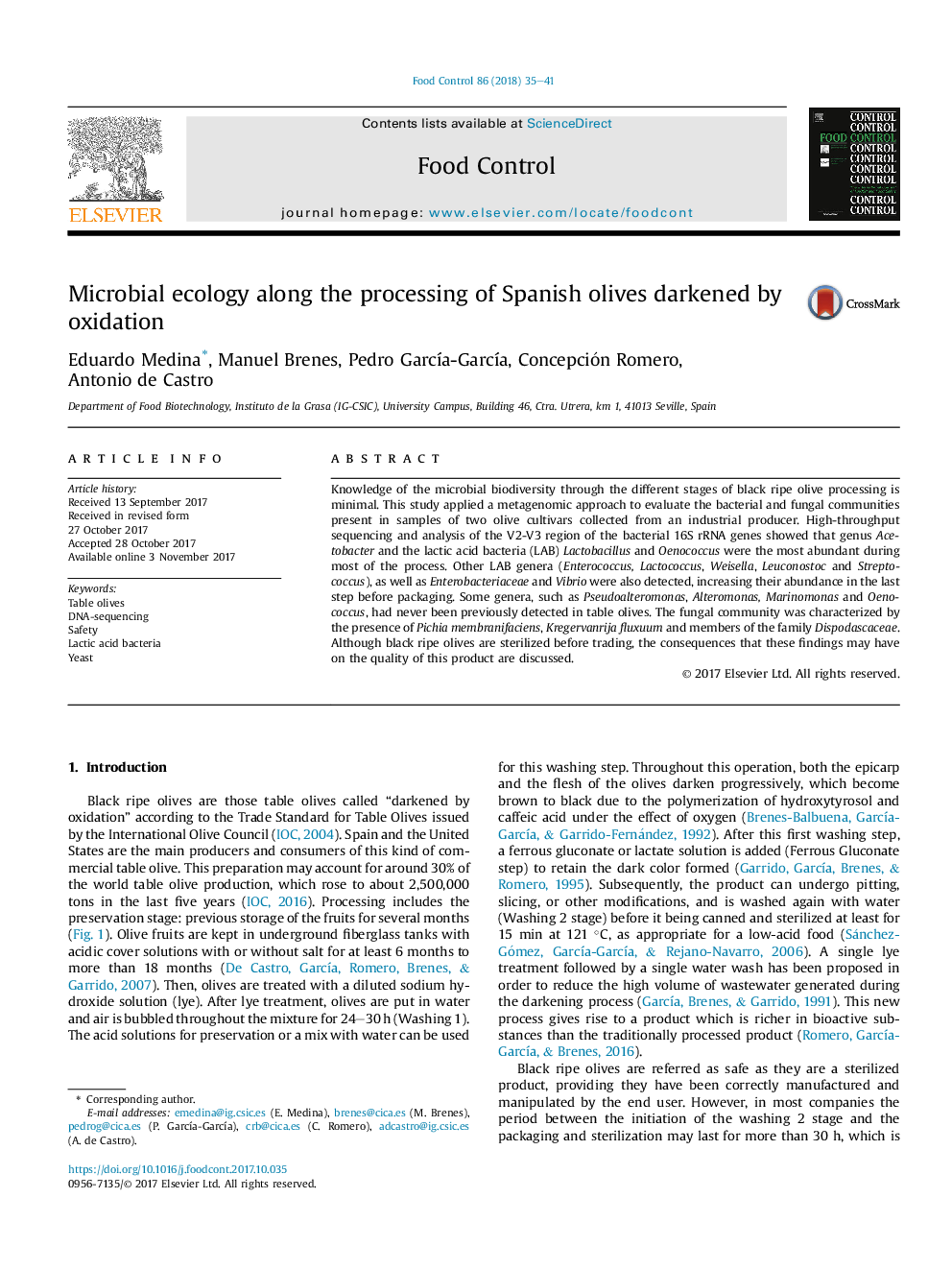| Article ID | Journal | Published Year | Pages | File Type |
|---|---|---|---|---|
| 8888106 | Food Control | 2018 | 7 Pages |
Abstract
Knowledge of the microbial biodiversity through the different stages of black ripe olive processing is minimal. This study applied a metagenomic approach to evaluate the bacterial and fungal communities present in samples of two olive cultivars collected from an industrial producer. High-throughput sequencing and analysis of the V2-V3 region of the bacterial 16S rRNA genes showed that genus Acetobacter and the lactic acid bacteria (LAB) Lactobacillus and Oenococcus were the most abundant during most of the process. Other LAB genera (Enterococcus, Lactococcus, Weisella, Leuconostoc and Streptococcus), as well as Enterobacteriaceae and Vibrio were also detected, increasing their abundance in the last step before packaging. Some genera, such as Pseudoalteromonas, Alteromonas, Marinomonas and Oenococcus, had never been previously detected in table olives. The fungal community was characterized by the presence of Pichia membranifaciens, Kregervanrija fluxuum and members of the family Dispodascaceae. Although black ripe olives are sterilized before trading, the consequences that these findings may have on the quality of this product are discussed.
Related Topics
Life Sciences
Agricultural and Biological Sciences
Food Science
Authors
Eduardo Medina, Manuel Brenes, Pedro GarcÃa-GarcÃa, Concepción Romero, Antonio de Castro,
